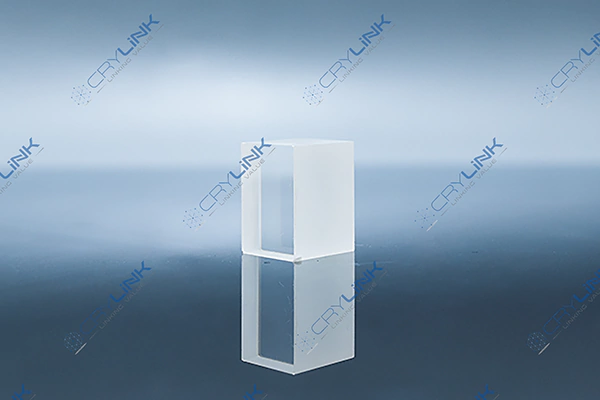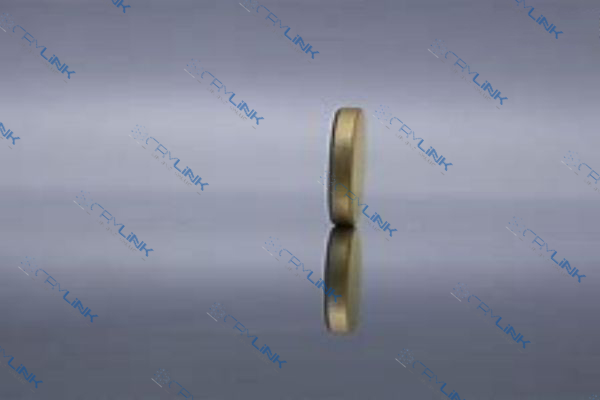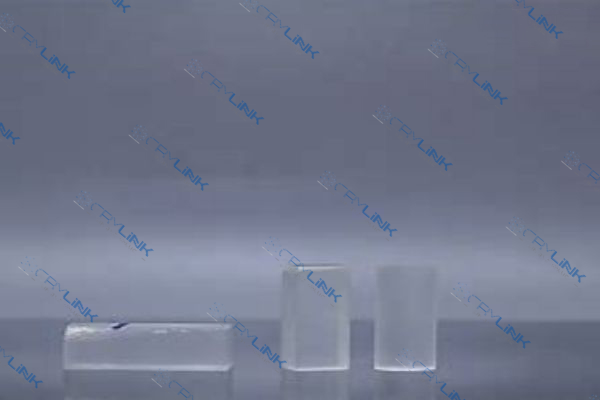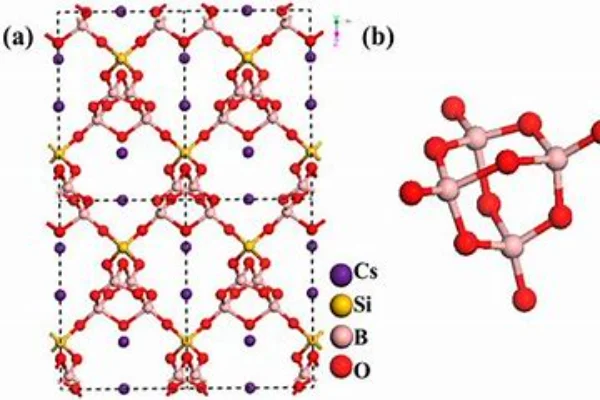
On the planet of optics and photonics, nonlinear crystals play an integral role in laser frequency conversion, permitting us to broaden our capabilities across different wavelength options. These nonlinear processes, such as Second Harmonic Generation (SHG) and Parametric Amplification, enable us to control the frequency of laser light, extending the applicability of laser systems.

Nonlinear crystals, being the crucial part in frequency conversion, have special homes that allow for the alteration of light’s homes. They exhibit a high degree of optical nonlinearity, which is basic for converting laser light into brand-new frequencies.
Second Harmonic Generation (SHG) is a two-photon procedure, where two photons at the fundamental frequency are integrated within a nonlinear crystal to produce a photon with twice the frequency (or half the wavelength)– thus the term “second harmonic.” This procedure is greatly relied upon in locations such as laser technology, where it’s often used to extend the frequency variety of lasers. For example, a laser that naturally produces infrared light can be made to give off visible light through SHG.
The performance of SHG is extremely dependent on the homes of the nonlinear crystal utilized, such as its nonlinearity and stage matching ability. Crystals like Lithium Niobate (LiNbO3) and Beta-Barium Borate (BBO) are popular options for SHG due to their exceptional nonlinearity and broad openness range.
On the other hand, Parametric Down-conversion (PDC) is a procedure where a photon with a high frequency (normally from a laser) is split into 2 lower frequency photons. The energy conservation law governs this conversion process, indicating the total energy of the two output photons equates to the energy of the initial input photon.
This procedure is incredibly important in the field of quantum information science. The pairs of photons produced in PDC can be entangled, a property that is basic to quantum computing and quantum cryptography.
Apart from SHG and PDC, there are other frequency conversion processes like Sum Frequency Generation (SFG) and Difference Frequency Generation (DFG). In SFG, two photons combine to produce a photon with a frequency equal to the amount of the input frequencies. On the other hand, DFG involves 2 photons interacting to produce a photon with a frequency equal to the distinction of the input frequencies.
These procedures have actually discovered comprehensive applications, such as generating terahertz waves (utilizing DFG) or for surface area science research studies (using SFG).
The appeal of nonlinear crystals lies in their unique homes that make them an important tool for frequency conversion. At the heart of these residential or commercial properties is the crystals’ high degree of optical nonlinearity. This nonlinearity is a step of a crystal’s ability to change the frequency of inbound light and is what assists in the conversion of laser light into different frequencies.
The principle of optical nonlinearity is straightforward. In nonlinear crystals, the light’s polarization response to the applied electrical field is not linear, unlike in direct products. Rather, it contains higher-order terms that enter play when the electrical field (or light strength) is adequately high. These higher-order terms are accountable for the frequency conversion processes.
The efficacy of nonlinear crystals in frequency conversion also owes much to their distinct crystal structures. The plan of atoms within the crystals is responsible for the high degree of optical nonlinearity. For example, Lithium Niobate (LiNbO3) has a trigonal crystal system, leading to a high second-order nonlinear susceptibility, suitable for SHG.
Furthermore, nonlinear crystals enable a process called phase matching. This is a method to take full advantage of the efficiency of the frequency conversion procedure. By matching the phases of the engaging waves, the performance of the frequency conversion in the nonlinear crystal can be considerably increased, causing higher output power at the modified frequency.

Making use of nonlinear crystals for various wavelength conversion processes is extremely contingent on the homes of the crystal, including its nonlinearity, phase matching ability, damage threshold, and transparency range.
Lithium Niobate (LiNbO3), for example, is understood for its high nonlinearity and wide transparency variety, spanning from the visible to the mid-infrared spectrum. This makes it particularly ideal for wavelength conversion processes in these areas, including second and third harmonic generation, and optical parametric oscillation.
Beta-Barium Borate (BBO), on the other hand, is applauded for its wide phase-matching capabilities and high damage threshold. It’s capable of efficient frequency conversion from the near-ultraviolet to the near-infrared range. This makes BBO a versatile option for a range of wavelength conversion processes, including second harmonic generation, optical parametric amplification, and sum and distinction frequency generation.
Nonlinear crystals provide the ability to create new wavelengths not straight available from laser sources. This wavelength tunability has several substantial benefits:.
Broadened Applications: With access to a larger range of wavelengths, the scope of laser applications expands significantly. This consists of microscopy, spectroscopy, telecommunications, and even quantum computing.
Improved Accuracy: By permitting the generation of particular wavelengths, nonlinear crystals supply greater accuracy in applications like spectroscopy and telecommunications. The ability to manage light residential or commercial properties with such information results in more precise and trustworthy outcomes.
Increased Efficiency: Frequency conversion through nonlinear crystals can be more efficient than using multiple various lasers to accomplish the exact same series of wavelengths. This performance can conserve energy and decrease costs.
Boosted Research Capabilities: The capability to generate brand-new wavelengths has actually opened up brand-new research study areas, particularly in fields such as nonlinear optics and quantum information science.
One such nonlinear crystal is Lithium Niobate (LiNbO3). This crystal stands out due to its exceptional transparency, high nonlinearity, and broad transparency range. Its qualities make it an ideal option for frequency conversion procedures, particularly in the telecommunications industry.
Another noteworthy nonlinear crystal is Beta-Barium Borate (BBO). Known for its broad openness range and high damage threshold, BBO functions as a versatile tool for frequency conversion. It’s especially efficient in the generation of high power, ultraviolet light, for this reason its popularity in spectroscopy.
The Second Harmonic Generation (SHG) process is based upon the interaction of light with the nonlinear homes of a crystal. In this procedure, two photons at an essential frequency (ω) are absorbed by the nonlinear medium, leading to the emission of a single photon with double the frequency (2ω)– the second harmonic.
This interaction depends on the crystal’s nonlinearity and its ability to preserve phase matching in between the basic and 2nd harmonic waves. Without stage matching, the produced second harmonic would destructively interfere with itself and minimize the effectiveness of SHG.
Nonlinear crystals like Lithium Niobate (LiNbO3) and Beta-Barium Borate (BBO) are typically utilized in SHG procedures. Lithium Niobate is favored for its high nonlinearity and broad openness range, making it appropriate for a variety of lasers. On the other hand, BBO is renowned for its broad phase-matching capabilities, enabling effective SHG across a wide frequency variety.
SHG has opened possibilities for laser frequency extension, allowing the production of light in spectral regions not straight available by standard lasers. For instance, SHG is frequently used to transform near-infrared laser light into visible light, considerably broadening the applicability of lasers.
In the medical field, SHG is a vital element in imaging techniques such as two-photon microscopy. The 2nd harmonic signal produced in these procedures offers high-resolution, contrast-rich images– a necessary element in biological and medical research.
In addition, SHG has actually likewise discovered usage in the field of product science for studying surface area and user interface properties of products, as the procedure is sensitive to structural proportion.

With advancements in laser innovation and nonlinear optics, the effectiveness and applicability of SHG continue to increase. Ongoing research study on novel nonlinear materials and phase matching techniques promises to further boost SHG effectiveness and open brand-new avenues for this basic nonlinear procedure. In essence, SHG is a crucial tool in the photonic tool kit, allowing the exploration and control of light in unprecedented methods.
In Parametric Amplification, the energy of a high-powered pump wave transfers to a weak signal wave and an idler wave through a nonlinear crystal. The result is a magnified signal wave, an useful procedure in optical signal processing and quantum information science.
Nonlinear crystals are essential in two-photon and multi-photon microscopy. The generation of 2nd and third harmonic signals enables deeper tissue penetration and greater image contrast than standard microscopy techniques.
In spectroscopy, nonlinear crystals like BBO assistance create light throughout a large spectrum, particularly in the ultraviolet range. This broad wavelength range permits accurate analysis and recognition of different products.
Telecom benefit profoundly from nonlinear optics. Frequency conversion via nonlinear crystals, like LiNbO3, enables wavelength department multiplexing, a technique that considerably increases the amount of data transfer over a single fiber optic cable.
The use of nonlinear crystals in laser frequency conversion has actually broadened our capabilities in wavelength options. By improving Second Harmonic Generation and Parametric Amplification procedures, these crystals have actually opened new possibilities in microscopy, spectroscopy, and telecoms. It is a field ripe with possible, waiting for more expedition and understanding.
Nonlinear crystals are products with optical nonlinearity, making it possible for the change of light homes, such as frequency, in nonlinear optical processes like frequency conversion.
SHG is a nonlinear optical process where 2 photons combine in a nonlinear medium to create a new photon with two times the energy or half the wavelength.
Nonlinear crystals enable two-photon and multi-photon microscopy. This method permits much deeper tissue penetration and greater image contrast than standard microscopy approaches.
In spectroscopy, nonlinear crystals assist generate light throughout a broad spectrum, particularly in the ultraviolet range, allowing for accurate product analysis.
Frequency conversion through nonlinear crystals permits wavelength division multiplexing, increasing information transfer over a single fiber optic cable.